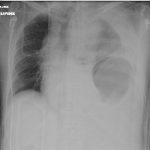Epley’s Maneuver For Vertigo After TBI
Some people experience vertigo after suffering a TBI. This may occur because small calcium carbonate crystals that are normally attached to a membrane in the middle ear are dislodged by the trauma. They can then settle within the semicircular canals. When the head is turned or moved, they brush against the sensitive hairs, sending false signals to the brain. This can result in dizziness, nausea and vertigo.
The Epley maneuvers were designed to move the crystals back out of the semicircular canals, where they can adhere to the membrane again. They consist of a pattern of head movements that should be performed by a trained professional. This is very important because the maneuvers may induce nausea requiring antiemetics. Certain head movements must be limited for a few days after the maneuvers to make sure the crystals stay in position. The overall success rate is about 80%, but on occasion the maneuvers must be repeated for success.
The video demonstrates the basics of the maneuvers. Remember, don’t try this at home by yourself. Seek out a therapist who is experienced with them.




